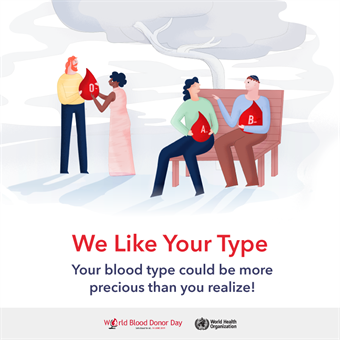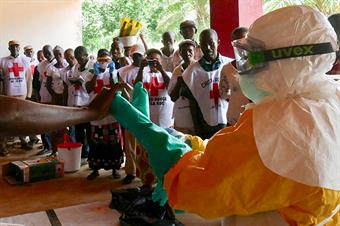Definitions
The International Classification of Diseases 11 (2018) classifies vision impairment into two groups, distance and near presenting vision impairment.
Distance vision impairment:
- Mild – presenting visual acuity worse than 6/12
- Moderate – presenting visual acuity worse than 6/18
- Severe – presenting visual acuity worse than 6/60
- Blindness – presenting visual acuity worse than 3/60
Near vision impairment:
- Presenting near visual acuity worse than N6 or M.08 with existing correction..
Prevalence
Globally, it is estimated that at least 2.2 billion people have a vision impairment or blindness, of whom at least 1 billion have a vision impairment that could have been prevented or has yet to be addressed.
This 1 billion people includes those with moderate or severe distance vision impairment or blindness due to unaddressed refractive error (123.7 million), cataract (65.2 million), glaucoma (6.9 million), corneal opacities (4.2 million), diabetic retinopathy (3 million), and trachoma (2 million), as well as near vision impairment caused by unaddressed presbyopia (826 million) (1).
In terms of regional differences, the prevalence of distance vision impairment in low- and middle-income regions is estimated to be four times higher than in high-income regions (1). With regards to near vision, rates of unaddressed near vision impairment are estimated to be greater than 80% in western, eastern and central sub-Saharan Africa, while comparative rates in high-income regions of North America, Australasia, Western Europe, and of Asia-Pacific are reported to be lower than 10% (2).
Population growth and ageing will increase the risk that more people acquire vision impairment.
Causes
Globally, the leading causes of vision impairment are:
- uncorrected refractive errors
- cataract
- age-related macular degeneration
- glaucoma
- diabetic retinopathy
- corneal opacity
- trachoma.
There is some variation in the causes across countries. For example, the proportion of vision impairment attributable to cataract is higher in low- and middle-income countries than high-income countries. In high income countries, diseases such as diabetic retinopathy, glaucoma and age-related macular degeneration are more common.
Among children, the causes of vision impairment vary considerably across countries. For example, in low-income countries congenital cataract is a leading cause, whereas in high income countries it is more likely to be retinopathy of prematurity.
Strategies to address vision impairment
Effective interventions are available for health promotion, prevention, treatment and rehabilitation to address the entire range of needs associated with eye conditions and vision impairment across the life course. Some are among the most feasible and cost-effective to implement. For example, uncorrected refractive error can be corrected with glasses while cataract surgery can restore vision. Vision rehabilitation is also effective in improving functioning for people with an irreversible vision impairment.
WHO response
WHO’s work is guided by the publication Universal eye health: a global action plan 2014-2019, which was agreed to by a resolution at the World Health Assembly in 2013.
Over the last few years, WHO has developed and implemented several tools to support countries to assess the provision of eye care services:
- Eye care services assessment tool
- Tool for assessment of diabetes and diabetic retinopathy
- Tool for assessment of rehabilitation services and systems
WHO also developed and launched the World report on vision. The report offers recommendations, including a number focused on ensuring comprehensive and integrated eye care in countries. It is expected that by shaping the global agenda on vision, the report will assist Member States and their partners in their efforts to reduce the burden of eye conditions and vision impairment and achieve the Sustainable Development Goals (SDGs), particularly SDG target 3.8 on universal health coverage.
References
1) Bourne RRA, Flaxman SR, Braithwaite T, Cicinelli MV, Das A, Jonas JB, et al.; Vision Loss Expert Group. Magnitude, temporal trends, and projections of the global prevalence of blindness and distance and near vision impairment: a systematic review and meta-analysis. Lancet Glob Health. 2017 Sep;5(9):e888–97.
2) Fricke, TR, Tahhan N, Resnikoff S, Papas E, Burnett A, Suit MH, Naduvilath T, Naidoo K, Global Prevalence of Presbyopia and Vision Impairment from Uncorrected Presbyopia: Systematic Review, Meta-analysis, and Modelling, Ophthalmology. 2018 May 9





